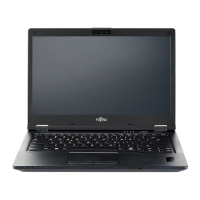Appendix
Appendix
Before Using the Optiona l Wireless LAN
This manu al describes the procedures required to properly set up and configure the optional
integrated Wireless LAN Mini-PCI device (referred to as "WLAN device" in the rest o f the
manual). Before using the WLAN device, read this manual carefully to ensure its correct
operation. Keep this manual in a s afe place for future reference.
Wireless LAN Devices Covered by this Document
This document is applicable to systems conta ining the f ollowing device:
• Intel Wireless-N 7260 802.11 BGN + BT v4.0 or
• Intel Du al Band W ireless AC 7260 + BT v4.0
Characteristics of the WLAN Device
• The WLAN devices are PCI Express Mini cards a ttached to the main board of the mobile computer.
• The WLAN devices operate in license-free RF bands, eliminating the need to procure
an F CC operating license. The WLAN operates in the 2.4G Hz Industrial, Scientific,
and Medical (ISM) RF band and the lower, middle, and upper bands of the 5GH z
Unlicensed National Information Infrastructure (UNII) ban ds.
• The WLAN devices are capab le of four operating mode s, IEEE802.11a,
IEEE802.11b, IEEE802 .11g, and IEEE802.11n.
• The WLAN device is Wi-Fi certified a nd operates (as applicable) at the maximum data
rate of 450 Mbps in IEEE802.11n mode (300 Mbps in this configuration); 54 Mbps
in IEEE802.11g mod e; and 11 Mbps in IEEE802.11b mode.
• The WLAN devices supp ort the following encryption methods - WEP,
TKIP, CKIP, and AES e ncryption.
• The Wireless LAN devices are compliant with the following standards: W PA,
WPA2, CCX1.0, CCX2.0, CCX3.0, and CCX4.0.
Wireless LAN Modes Using th is Device
Ad Hoc Mo
de
"Ad Hoc M
ode" refers to a wireless network architecture w here wireless network connectivity
betwee
n multiple compu ters is established without a central wireless network device, typically
known a
s Access Poin t(s). Connectivity is accomplished using only client devices in a peer-to-peer
fashi
on. That is why Ad Hoc networks are also known as peer-to-peer networks. Ad Hoc
netwo
rks are an e asy and inexpensive method for establishing network connectivity between
multi
ple computers. A d Hoc mode requires that the SSID, network authentication, and encryption
key s
ettings are identically configured on all computers in the Ad Hoc network.
Fujitsu 87

